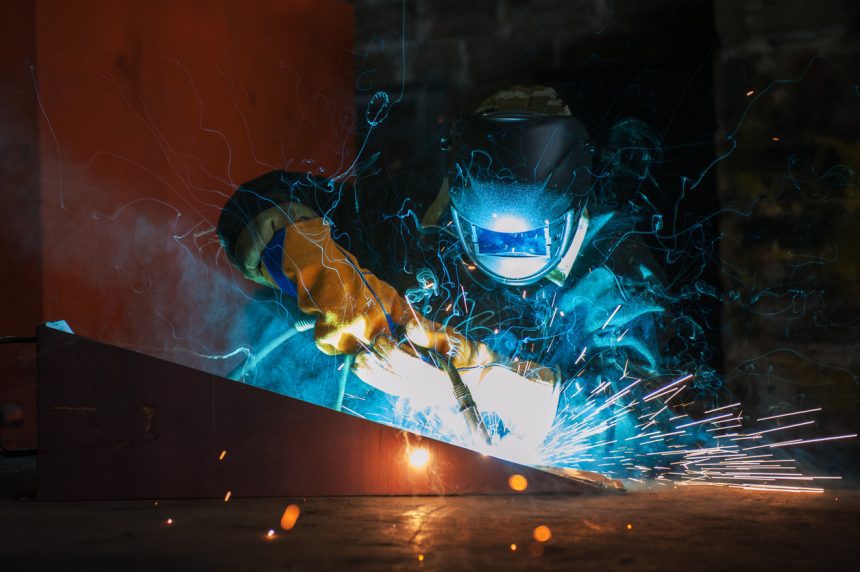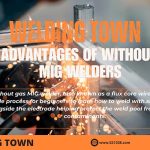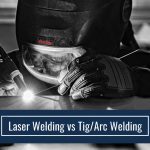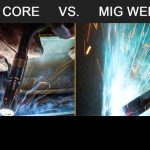Welding is one of the most important parts of any manufacturing facility. But what does a good weld look like?
Good Weld vs. Bad Weld: How to tell the Difference
021208.com
The article will take you through a few types of welds, helping you decide what a good weld should be. In today’s world, welders use many different types of good welding machines. They manage to create a weld with the help of pressure, heat, and skillful application. Modern welding machines also benefit from new methods and equipment that facilitate a speedier and simpler welding process, enabling the production of good stick welds with more complexity. You may not have much instruction when learning what a good cheap welder looks like. Here is some advice to get you through the process, however.
| Good Weld | Bad Weld |
|---|---|
| Smooth and uniform appearance | Rough and irregular appearance |
| Strong and consistent weld bead | Weak and inconsistent weld bead |
| Proper penetration and fusion of base metals | Insufficient penetration and fusion of base metals |
| Free of porosity, cracks, and other defects | Contains porosity, cracks, and other defects |
| Meets all strength and ductility requirements | Does not meet strength and ductility requirements |
| Meets all code and industry standards | Does not meet code and industry standards |
What is Welding?
Two pieces of metal may be joined together by the technique of Welding. Because it is simple to do and one of the most lasting welding procedures, it is one of the most popular. There are many other kinds of Welding, but arc welding is the most typical one. A good weld should have a polished appearance. There should be no apparent seams or stains, and it should have a smooth surface. Additionally, it must be sturdy enough to support the weight of the welded piece.
What are Welding Principles?
You must comprehend the welding build pro table concept to good mig weld. The fundamental idea is that metals are joined together by heat. When Welding, the metal is heated using a welder’s flame until it liquefies and flows together. Arc welding and gas welding are the two most popular methods of Welding.
Types of Welds
Metal and heat are used during the welding process to adhere items together. Discount welds come in a variety of varieties, each having unique characteristics. Welds may be created between two metal pieces of the same thickness or different thicknesses. They may also be constructed using two different-shaped pieces of metal, such as a round bar and a rectangle.
There are three common types of welds: flux-cored, gas-shielded, and submerged arc.
Flux-cored welds use a flux material to help create a good joint. The flux material melts at high temperatures and helps to prevent the weld from sticking together.
Gas-shielded welds use a gas shield to protect the Weld from the environment. It prevents the Weld from oxidizing and becoming brittle.
Submerged arc welds use an electric arc to heat both pieces of metal quickly enough to make a good joint.
What Makes a Good Weld
When it comes to welding supplies, there is no definitive answer to the question of what makes a good weld. However, some general factors should be considered to produce a quality weld.
First and foremost, a good weld will be consistent. The welds should all look the same in terms of shape and size. It is important because it ensures that the joint is solid and reliable.
Second, a good weld will be uniform in thickness. It means that the metal layers will be fused evenly, which results in a stronger joint.
Finally, a good weld will be leak-free. If water or gas starts seeping through the Weld, it can cause severe problems down the line.
Tools and Materials
The good tig welder may choose from a variety of materials and equipment for welding supply stores. The welding torch is the most crucial stick welding instrument. Failure to provide sufficient heat from the welding flame to the weld joint will result in a failed weld. The Arc welder, stick welder, best mig welder, and TIG welder are further welding jacket instruments. The kind of welder required will also depend on the kind of metal being welded. For instance, a TIG welder is needed to weld steel, but a MIG welder is needed to weld aluminum.
Good and bad things are co-related with each other in this universe. It is also a vital matter in welding and at the time of welding, the welder must have to face many complications. But if he can gain knowledge about good weld then it will be easier for him to differentiate between good weld vs bad weld.
021208.com
Industrial Welding Types
To connect two or more pieces of metal, Welding is a crucial component of many industrial operations. There are several ways to do this, but fusion welding is the most popular. Industrial applications may make use of a variety of weld types. The most popular types of Welding are SMAW, MIG, and GTAW (Gang-Tow welding) (Stick-MIG Welding). Every kind of weld has benefits and drawbacks, so choosing the best one for the project is crucial.
Because it is quick and straightforward to use, GTAW welding is one of the most used methods of Welding. It produces a hot area on the metal using a gas-arc technique, melting the two parts together. This approach works well when you need a fast fix or doesn’t have time to wait for the region to heat up during fusion welding tables. Compared to GTAW welding, MIG welding is a more sophisticated technology that uses significantly higher temperatures. It works well for more significant tasks when fusion welding is unsafe or impractical. When it comes to attaining, MIG and GTAW both have certain benefits.
What does a good weld look like?
There is no single answer to this question as Welds can vary significantly in appearance depending on the welding process and the type of metal being welded. However, some general guidelines can help you produce a quality weld.
At First before Welding, the weld area should be free of any contaminants. It means using a proper cleaning procedure and tools and repeatedly scraping away any impurities that may form during Welding.
Second, good mig welds are smooth. They should have a uniform surface finish with no bumps or ridges. If there are any irregularities on the weld surface, they will be more visible and susceptible to failure.
The third criterion for a good weld is strength. The weld must be able to hold its own against wear and tear. It should also resist breaking when subjected to stressors such as temperature changes or mechanical forces.
The characteristics of a good weld?
When we talk about good welds, a few things come to mind. First and foremost, a good weld should be strong. It should be able to hold up under pressure and withstand various temperatures. It should also be clean and free from defects. Finally, it should look uniform and consistent.
Welding Safety
When Welding, it is important to be aware of your surroundings and take safety precautions. Here are some tips for welding safety:
- Wear a helmet when welding with a welder’s torch.
- Always wear eye protection when welding.
- Keep a safe distance from the weld area.
- Follow the instructions of your best beginner welder.
Visual Observation of Welding
When Welding, it is important to consider its visual observation. There are a few things that should be looked for when inspecting welds.
The first thing to look for is the penetration of the electrode into the joint. A good weld will have a good penetration depth, meaning that the electrode has gone through the material being welded. It will result in a strong joint and less stress on the surrounding area.
Another thing to look for is cleanliness. A good weld will have little or no visible slag or flux residue. It denotes that there was little to no contact between the welding electrodes and the materials being welded with the welders’ helmet, resulting in a cleaner weld and a lower risk of contaminating the joint.
Finally, look for symmetry. A perfect weld should have identical-looking surfaces both before and after Welding. It is important because it ensures that the joint is structurally sound and will not leak or fail over time.
Explanation of the Process
The procedure of connecting two metal parts is called Welding. Arc welding, in which an electric current passes metals, is the most popular kind of Welding. It melts and fuses the metal. The weld should be clean and free of defects. A good weld should have a smooth surface with no pits or cracks. The filler metal should also be smooth and free of any debris. Finally, the weld should be uniform in color and thickness.
The Importance of Practice
When it comes to Welding, there is no substitute for practice. Unfortunately, many welders don’t have the opportunity to practice their trade often enough. It could be due to several reasons, including the fact that many welders are self-employed. Thus, welders need to find ways to practice their welding skills outside work. One way to do this is by joining a miller welding club or association. Joining a welding club can allow the best stick welder to practice their welding skills with other experienced welders. Additionally, joining an association can provide welders with resources and advice that they may not be able to find on their own. In short, practicing your welding skills is important if you want to produce quality crafts. So make sure you find ways to get Practice.
Things to Consider Before Starting a Project
When starting a welding project, there are a few things to remember. Here are five tips to help ensure a good weld:
- Make sure the equipment is calibrated correctly.
- Make sure the materials are adequately prepared.
- Ensure the work area is free from debris and other potential hazards.
- Use proper welding procedures and techniques.
- Keep an eye on the weld quality throughout the project.
Common mistakes people make in Welding
Welding is a skilled trade that requires plenty of practice and precision to produce a quality finished product. Here are some common welding mistakes people make that can lead to problems.
- Not using the correct filler metal
If you’re not using the correct filler metal, your welds will be weak and prone to breaking. Make sure to use a metal compatible with the alloy you’re welding, and select the right filler rod size.
- Not cleaning the area before Welding
If an area is dirty, it will be more difficult to weld because the metal will stick to the dirt instead of melting. Clean the area before starting your welds using a wire brush or an abrasive cleaner.
- Working too fast
When you work too fast, you end up making mistakes that lead to inconsistency in your welds. Take your time and do each step correctly to create beautiful welds that hold up for years.
- Not using enough heat
Welding is one of those trades where more heat means better results. If you don’t have enough heat, your welds will be brittle and prone to breaking.
Objective when quality controlling our welds
When welding, the objective is to produce a quality weld that will withstand the conditions of use and remain intact. When inspecting welds, it is important to look for several quality indicators, including:
- Bead size – The more significant the bead size, the better the weld.
- Penetration – A good weld will deeply penetrate both metal pieces.
- Smoothness – A smooth weld should have no sharp edges or ridges.
Safety Concerns and Precautions in Welding
When Welding, it is important to consider the safety concerns and precautions. Here are a few things to keep in mind:
Wear proper safety gear. As with any other welding process, proper safety gear is essential when welding. It includes an appropriate mask, gloves, and eye protection. Use a shielded metal arc welder. A shielded metal arc welder is a safer option when Welding because the electric current travels through a metal mesh instead of coming into contact with the weld joint.
Follow the manufacturer’s instructions. Always follow the manufacturer’s instructions when using a welder, as these instructions will provide you with specific safety guidelines. Use caution when welding on high-voltage lines or power tools. When welding on high-voltage lines or power tools, be careful not to touch the ends of the wires with your hands or body.
Conclusion
A good weld should be composed of clean, smooth surfaces that are well aligned. It should also have a consistent bead size and appearance across the joint. Finally, a good weld should be free from spatter and other defects. If you can achieve these goals while welding with a trustworthy welder, you’ll be on your way to creating a quality weld.











